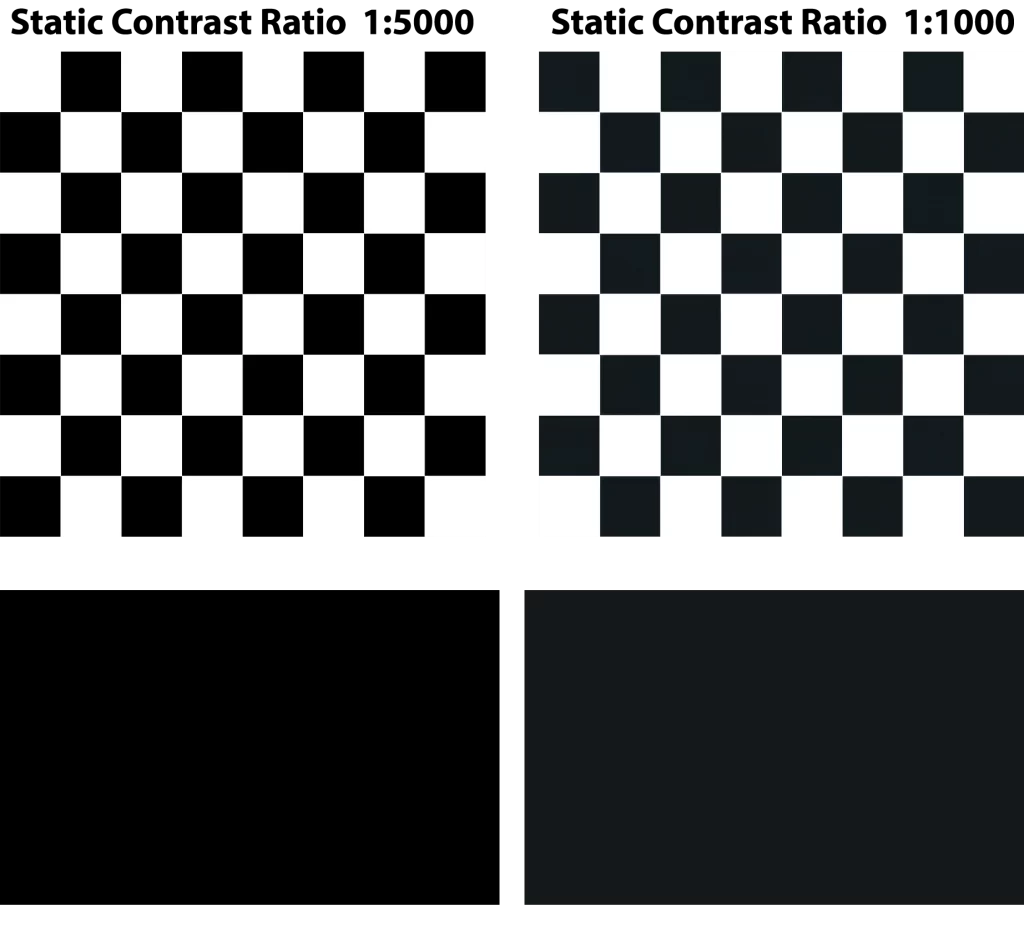It measures how well a screen can differentiate between the lightest whites and the deepest blacks.
A higher contrast ratio means a brighter and more realistic image, making viewing content more enjoyable.
However, manufacturers often manipulate these ratios to give their products the appearance of superiority.

This specification is vital as it affects the vividness and detail of visuals.
A subpar contrast would result in a less vibrant and detailed image.
There are two primary types of contrast ratios: static and dynamic.
When assessing a TVs contrast, its more reliable to consider the static contrast ratio.
This metric clarifies how well a TV displays content, as manufacturers can sometimes exaggerate dynamic contrast numbers.
Static contrast ratio what is it?
Its a more trustworthy indicator of a displays genuine visual performance.
Imagine a movie scene where a knight stands in glaring sunlight with a shadowy forest backdrop.
The static contrast ratio ensures you perceive both the gleaming armor and the forests subtle intricacies distinctly.
A greater disparity between these two figures indicates more detailed screen visuals.
A straightforward way to visualize static contrast ratio is a checkerboard pattern with stark white and intense black squares.
For optimum visuals, a static contrast ratio should be a minimum of 1000:1.
Higher-end TVs often boast ratios like 2000:1, 2500:1, or even 5000:1.
Generally, a higher ratio implies superior image clarity.
How to calculate TV contrast ratio
Contrast measurement is a straightforward procedure.
A specialized tool called a Lux meter is then used to measure the brightness of the central white square.
Subsequently, the luminance of the surrounding black squares is gauged, and their average darkness is computed.
The essence of measuring contrast lies in discerning the difference in brightness between the white and black areas.
The contrast ratio, a key metric, elucidates this difference.
Its computed by dividing the luminance of the white square by that of the black square.
Dynamic contrast ratio what the difference?
Dynamic contrast ratio is a specification for TVs and other displays.
Conversely, the backlight might be turned up in a bright scene to make the scene look brighter.
This leads to inconsistent ratios being reported.
Two TVs from distinct manufacturers might boast dynamic contrast ratios of 80,000:1 and 60,000:1, respectively.
However, the actual variance could be insignificant.
Heres how the picture appears in a test involving TVs with varying dynamic contrast ratios.
As you’re able to observe, the numbers dont always accurately represent reality.
A small example: Imagine youre watching a movie with lots of different scenes.
Some scenes are really bright, like a sunny beach, and others are darker, like a space.
Dynamic contrast makes the screen brighter when showing a white picture.
But Dynamic contrast also dims when its supposed to be dark.
Frequently, this feature eliminates small elements from the picture, prompting some users to advise against its use.
Its two different things!
I wanted to highlight this point because it took me some time to understand.
Its a bit like how regular TVs work.
QLED TVs have really nice and pure colors because of these special dots.
It uses a special material that lights up when electricity passes through it.
This material helps create the picture you see on the TV screen.
OLED has a unique advantage.
This ability adds depth and intensity to the scenes.
However, QLED fights back with its own strength.
QLED TVs can get super bright, which is important for showing off the brightest parts of the picture.
This is crucial for making high-qualityHDRcontent look amazing.
So, which TV is better for you?
If your room is bright, QLEDs brightness will make everything look colorful and lively.
MostVApanels have a higher contrast ratio of up to3000:1, and even higher in expensive models.
However, VA panels have a drawback.
While these factors influence it, it reciprocally affects them as well.
Collectively, they determine the overall visual fidelity of a screen.
HDR TV and contrast ratio dependencies
HDRstands for High Dynamic Range.
Its a technology that allows you to see more detail in the brightest and darkest parts of the picture.
What is HDR TV in detail.
In summary, while a central metric, the contrast ratio doesnt operate in isolation.